The butterfly goby (Awaous flavus, formerly known aquaristically under the synonym A. strigatus) has a large distribution area along the Atlantic coast of South America. They are found in the lower reaches of rivers in Brazil, Guyana, Suriname, Venezuela, Colombia and on islands off the coast. Adults of this species, which is a maximum of 10 cm long, live in fresh water or shallow brackish water (approx. 0.4‰), but the larvae develop in the sea. This also explains why the species is found on islands in the Caribbean. The animals that we are currently able to offer for the first time in a long time come from Brazil.
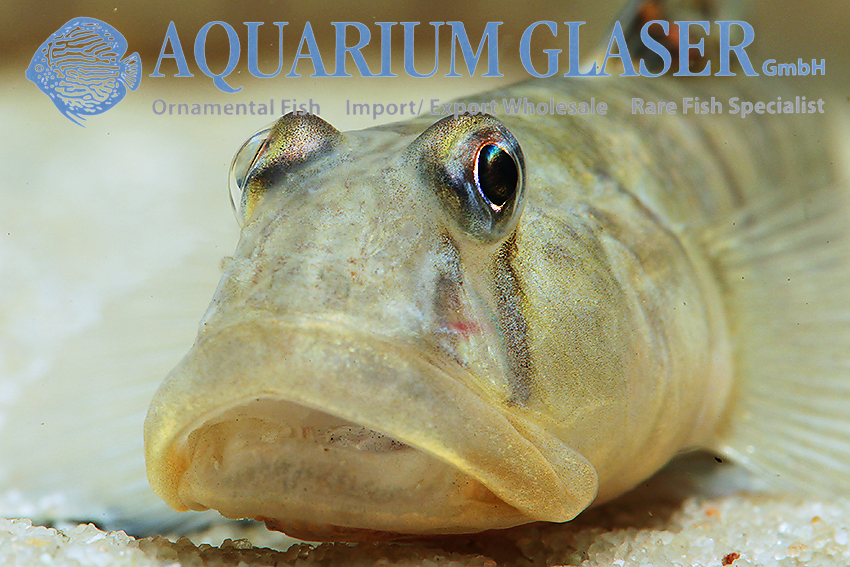
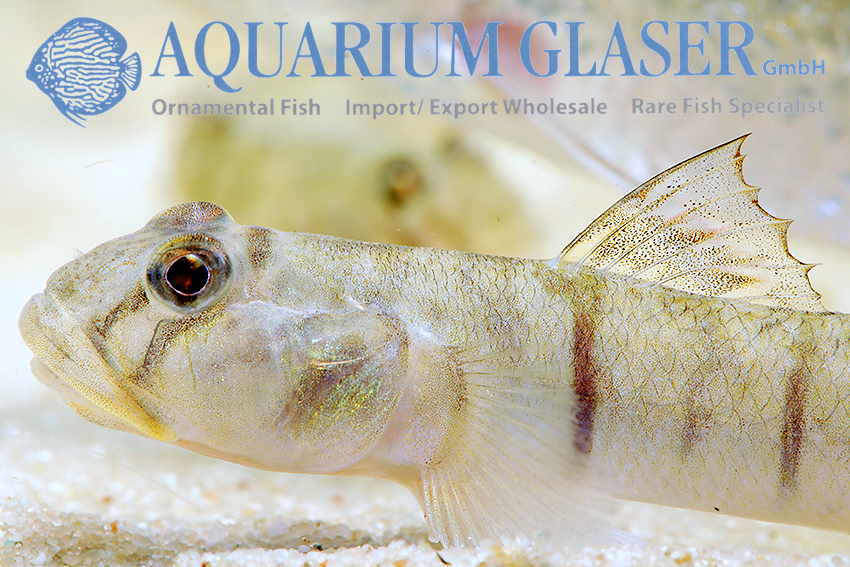
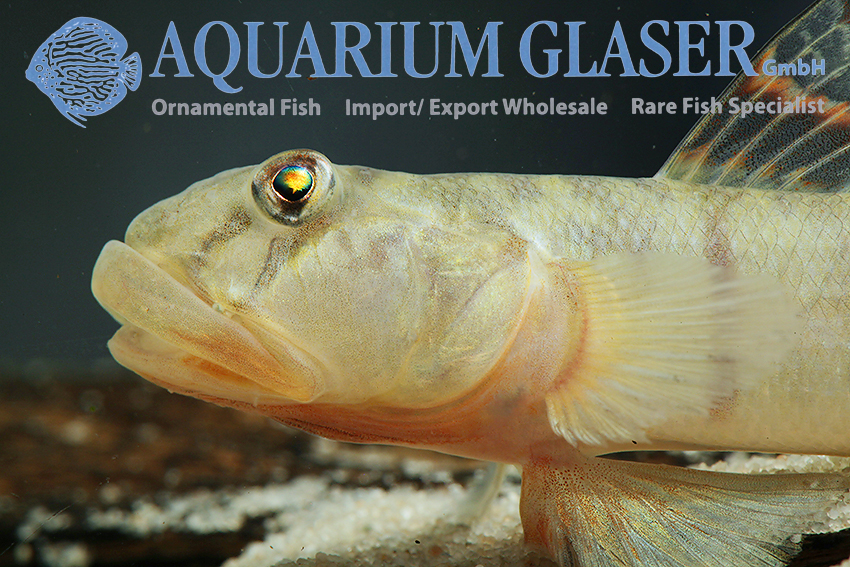
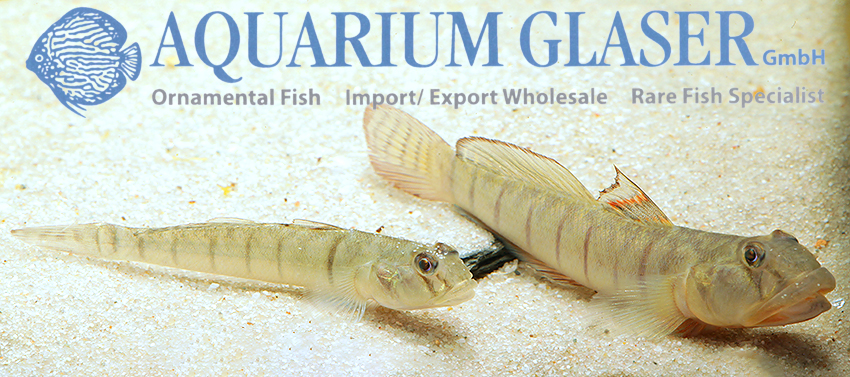
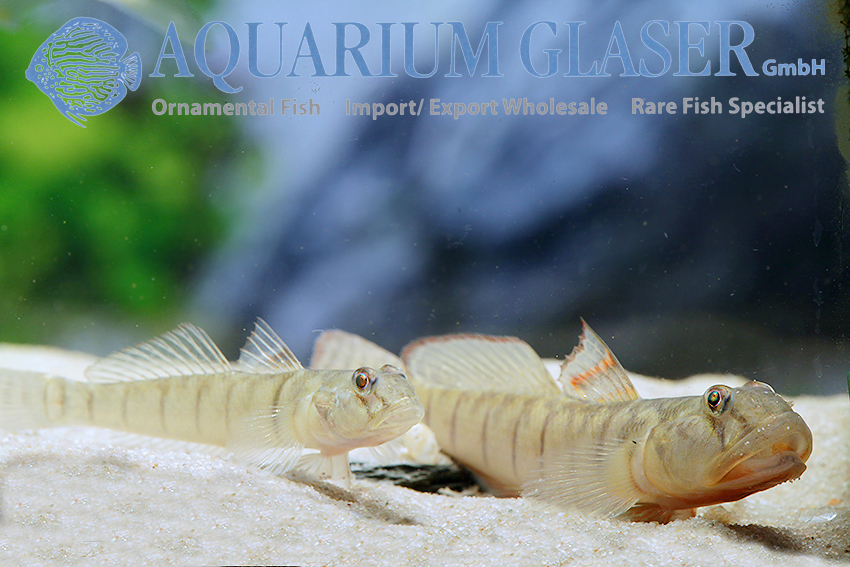
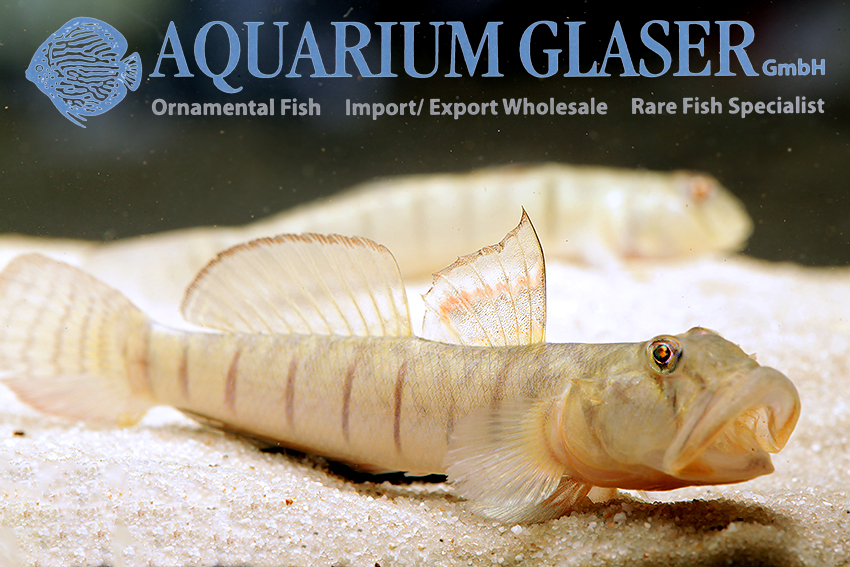
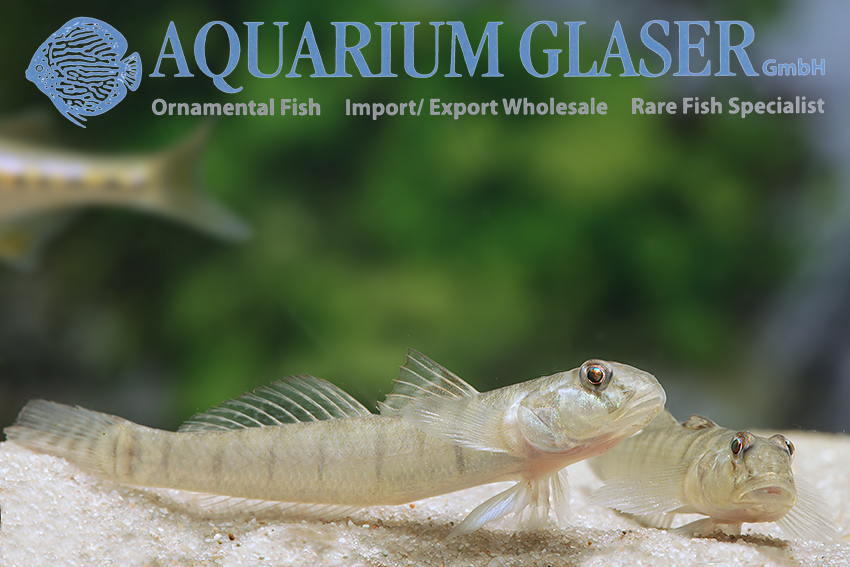
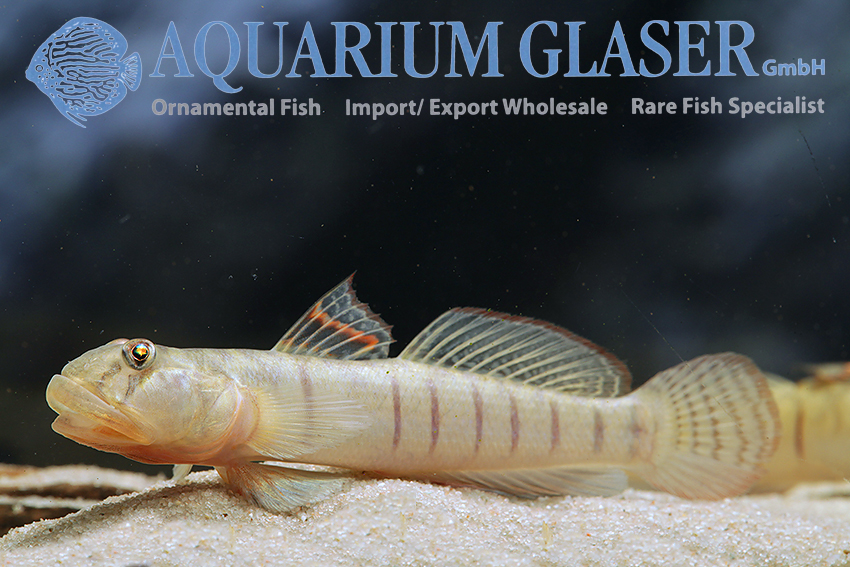
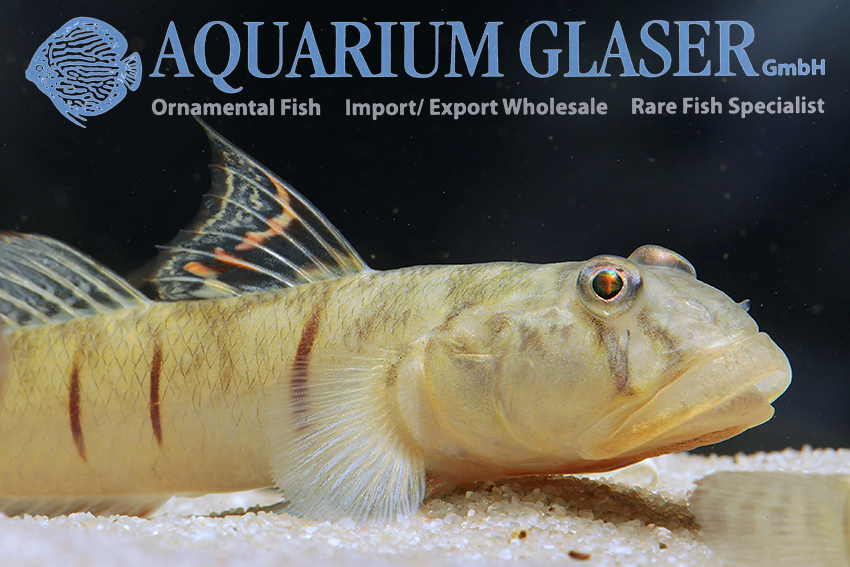
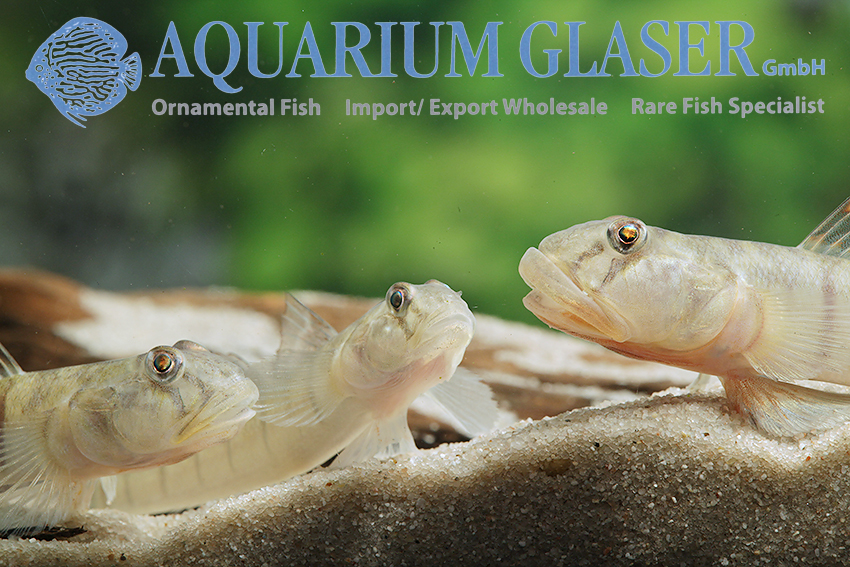
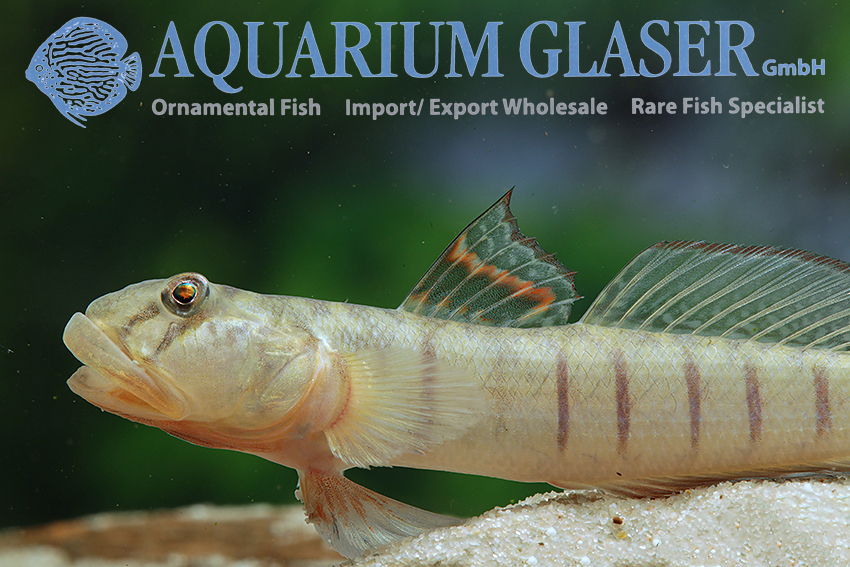
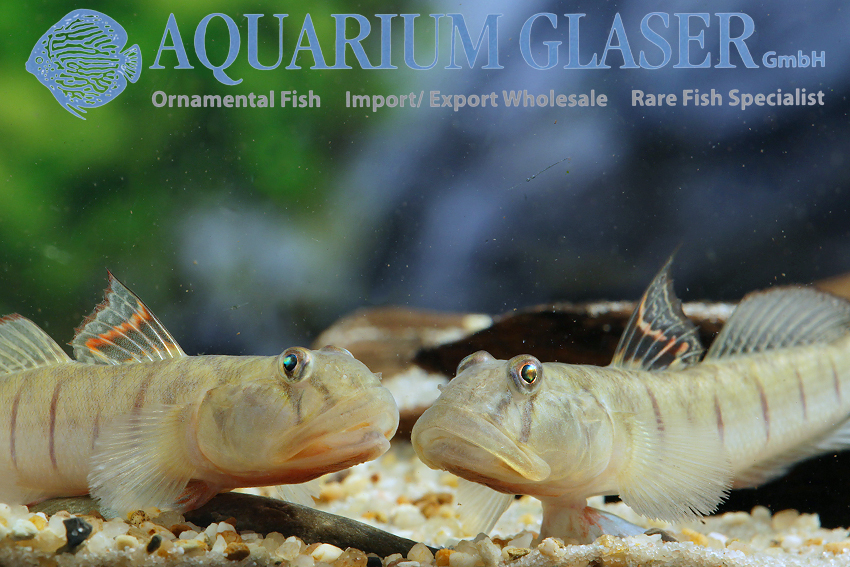
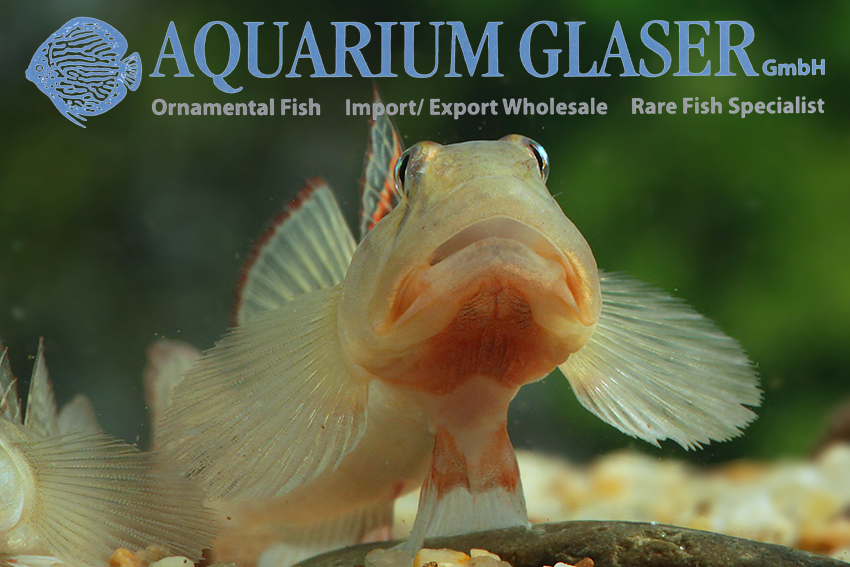
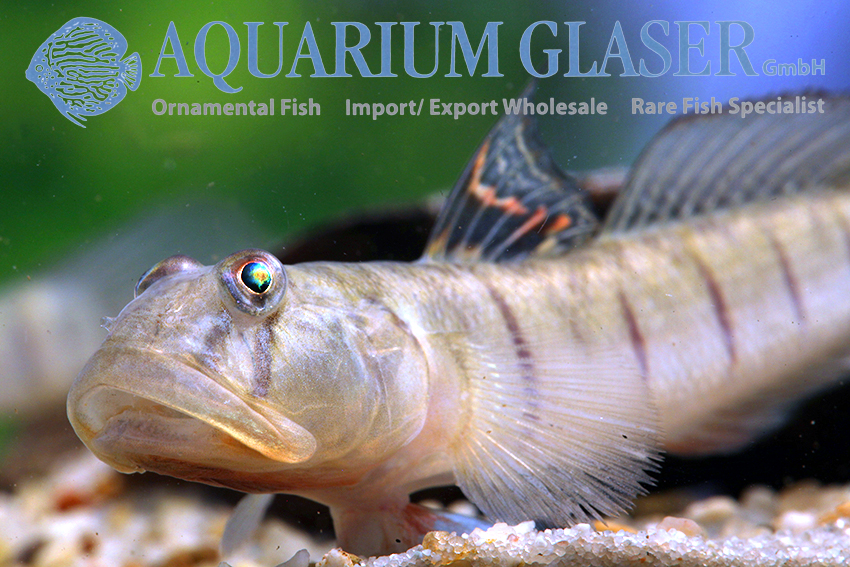
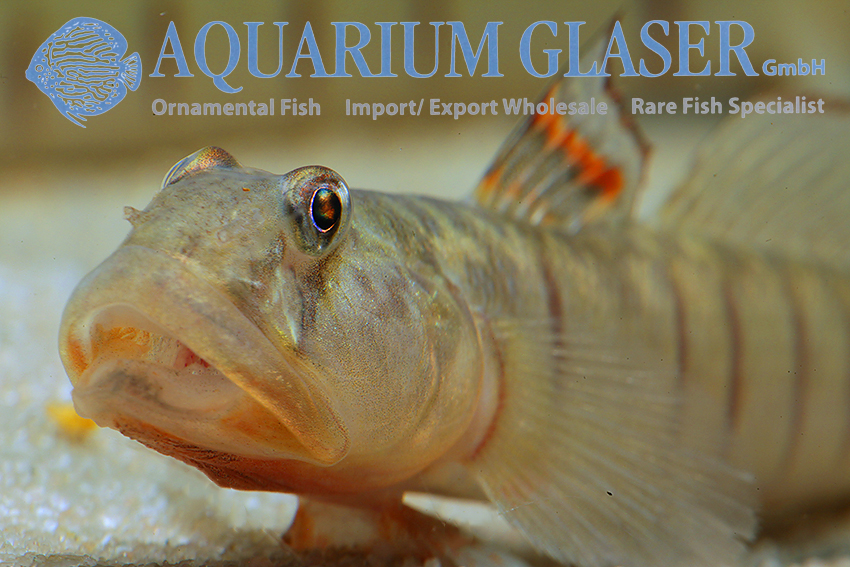
In the wild, the butterfly goby feeds on small particles that it filters out of the sandy, muddy bottom. In the aquarium, the animals are problem-free feeders, but the food particles must not be too coarse. The males – recognizable by their greatly enlarged mouths, the colourful first dorsal fin and wider dark fringes in the fins, but to be absolutely sure, you have to look at the gential papillae, which are shaped differently in males and females – become territorial when it comes to reproduction. Otherwise these gobies tend to be sociable. However, A. flavus requires a firm substrate for spawning, such as a flat stone, a root or similar. Such substrates are rather rare in the sandy-muddy biotope they inhabit, and the males defend a good spawning site with corresponding intensity. The fight between two males is spectacular: with wide open mouths, they push each other back and forth face to face, not unlike a deer fight.
The numerous eggs are attached to the ceiling of a cave and are tiny; the male guards the clutch. The eggs often hatch after just 13 hours and the larvae are passively drifted into the sea, where they develop in the plankton. As far as we know, rearing in the aquarium has not yet been successful, but has probably not yet been seriously attempted.
The aquarium for butterfly gobies should be sparsely decorated at the bottom and have as large an area as possible. The height is of secondary importance. The bottom should consist of fine sand, at least in some areas, into which these fish occasionally burrow. The water temperature can be in the range of 24-28°C.
We have also made a small film about these fish, which you can watch here: https://www.youtube.com/watch?v=8eiMbj4IoNo
For our customers: the animals have code 209903 (6-8 cm) on our stock list. Please note that we only supply the wholesale trade.
Text & photos: Frank Schäfer




